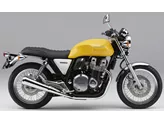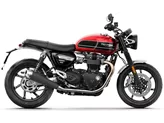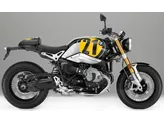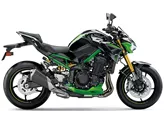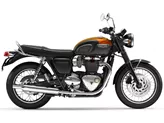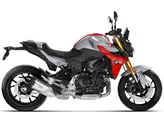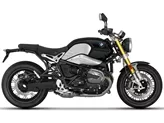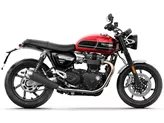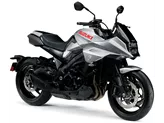Yamaha XSR900 Abarth 2017 vs. Kawasaki Z900 RS 2018

Yamaha XSR900 Abarth 2017

Kawasaki Z900 RS 2018
Overview - Yamaha XSR900 Abarth 2017 vs Kawasaki Z900 RS 2018
The Yamaha XSR900 Abarth 2017 and the Kawasaki Z900 RS 2018 are both naked bikes that offer a unique riding experience.
Starting with the Yamaha XSR900 Abarth 2017, it boasts a magnificent design and the highest level of exclusivity. It is equipped with a strong three-cylinder engine that delivers 115 horsepower and 87.5 Nm of torque. The engine is liquid-cooled and has a displacement of 847cc. The bike features an upside-down telescopic fork front suspension and a swing arm rear suspension with a monoshock absorber. The frame is made of aluminum and has a twin tube design. The front brakes are double disk with a diameter of 298mm. The XSR900 Abarth comes with advanced rider assistance systems such as ABS and traction control. The front tire has a width of 120mm and a diameter of 17 inches, while the rear tire has a width of 180mm and a diameter of 17 inches. The wheelbase is 1440mm and the seat height is 830mm. The bike weighs 195kg (with ABS) and has a fuel tank capacity of 14 liters.

Yamaha XSR900 Abarth 2017
On the other hand, the Kawasaki Z900 RS 2018 features a powerful and smooth in-line four-cylinder engine that produces 111 horsepower and 98.6 Nm of torque. The engine is also liquid-cooled and has a displacement of 948cc. The bike has an upside-down telescopic fork front suspension and a swing arm rear suspension with a monoshock absorber. The frame is made of steel and has a tubular design. The front brakes are double disk with a diameter of 300mm. In addition to ABS and traction control, the Z900 RS also comes with ride by wire technology. The front tire has a width of 120mm and a diameter of 17 inches, while the rear tire has a width of 180mm and a diameter of 17 inches. The wheelbase is slightly longer than the XSR900 Abarth at 1470mm and the seat height is 835mm. The bike weighs 215kg (with ABS) and has a larger fuel tank capacity of 17 liters.
In terms of strengths, the Yamaha XSR900 Abarth 2017 stands out with its magnificent design and highest level of exclusivity. It also has a strong three-cylinder engine, powerful brakes, and agile handling. Additionally, it comes with traction control as a standard feature. On the other hand, the Kawasaki Z900 RS 2018 is praised for its powerful and smooth engine, good looks, comfortable seating position, and balanced handling. It is described as easy to ride, neither nervous nor ponderous.

Kawasaki Z900 RS 2018
However, there are some weaknesses to consider. The Yamaha XSR900 Abarth 2017 has a very low positioned handlebar, which may not be comfortable for all riders. Additionally, it has a high price compared to other bikes in its class. The Kawasaki Z900 RS 2018, on the other hand, lacks a shift assistant, making gear shifting less smooth. It is also heavier than other retro bikes in its class, which may affect maneuverability. The seat is described as a little too soft on long tours, and there is no wind protection.
In conclusion, both the Yamaha XSR900 Abarth 2017 and the Kawasaki Z900 RS 2018 offer unique features and strengths. The XSR900 Abarth stands out with its design and exclusivity, while the Z900 RS impresses with its powerful engine and comfortable riding position. However, potential buyers should consider the weaknesses of each bike, such as the handlebar position and high price of the XSR900 Abarth, and the lack of a shift assistant and heavier weight of the Z900 RS.
Technical Specifications Yamaha XSR900 Abarth 2017 compared to Kawasaki Z900 RS 2018
Pros and Cons in comparison
Pros and Cons in comparison
Yamaha XSR900 Abarth 2017

Basically, it hardly matters whether I think the Yamaha XSR900 Abarth is good or bad - the first 95 of the 695 units worldwide were sold out within 20 minutes. So there's no need to worry about the remaining 600. Nevertheless, it should be mentioned that the Abarth version looks enormously good with the carbon fairings front and rear, the Akrapovic exhaust and the suede saddle. The low handlebars are not as comfortable as the conventional XSR900, but fit perfectly with this stylish appearance. The engine, chassis and brakes work just like on the normal XSR900 - in other words, extremely sporty and wonderfully rideable.
Kawasaki Z900 RS 2018

Its four-cylinder is silky smooth while delivering enough power to make you grin under your helmet. It is also very easy to move, which should make it a great commuter bike in everyday life and serve as an iconic fun bike at the weekend. The looks find the perfect straddle of classic design and modern details to form a coherent retro package that is also a worthy tribute to Kawasaki history. It's a great naked bike with a snazzy look.
Price Comparison Avarage Market Price Yamaha XSR900 Abarth vs Kawasaki Z900 RS
There are a few key differences between a Yamaha XSR900 Abarth 2017 and a Kawasaki Z900 RS 2018. It takes less time to sell a Kawasaki Z900 RS with 154 days compared to 189 days for the Yamaha XSR900 Abarth. Since model year 2017 1000PS.de editors have written 3 reviews for the Yamaha XSR900 Abarth and 26 reviews for the Kawasaki Z900 RS since model year 2018. The first review for the Yamaha XSR900 Abarth was published on 11/7/2016 and now has more than 24,100 views. This compares to more than 63,700 views for the first review on Kawasaki Z900 RS published on 9/6/2017.



